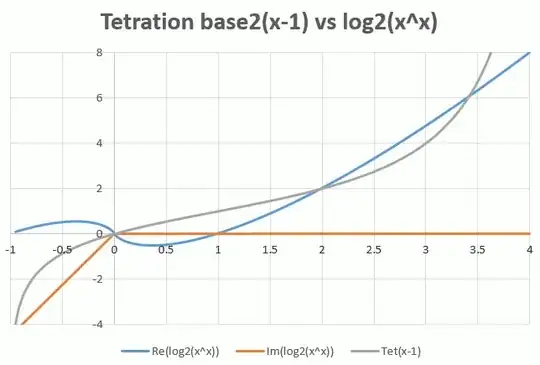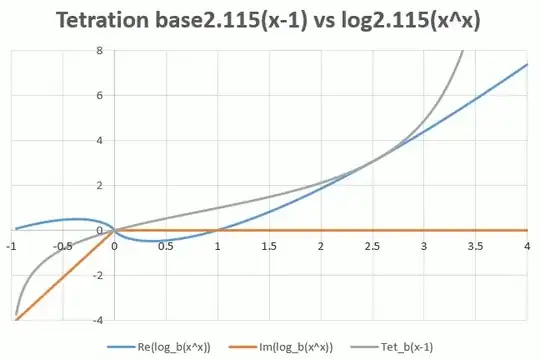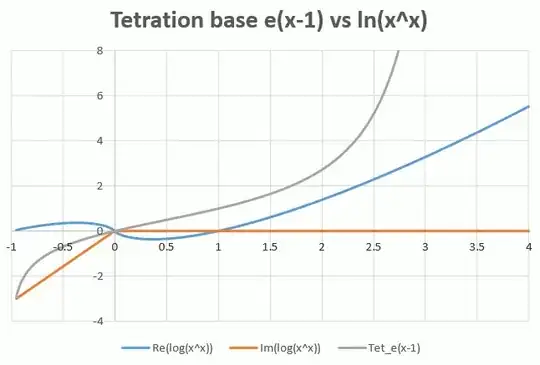With a simple method, using the eigendecomposition of the $\small 16 \times 16, 24 \times 24,32 \times 32,48 \times 48,64 \times 64$ - sized truncated Carlemanmatrix for $f(x)=2^x$ , I get
print(n)
%191 = 3.41417132461 \\ for size 16x16
%199 = 3.41417539283 \\ for size 24x24
%206 = 3.41417594201 \\ for size 32x32
%333 = 3.41417608600 \\ for size 48x48
%387 = 3.41417609800 \\ for size 64x64
print(n-sqrt(2))
%192 = 1.99995776224 \\ for size 16x16
%200 = 1.99996183046 \\ for size 24x24
%207 = 1.99996237964 \\ for size 32x32
%388 = 1.99996253563 \\ for size 64x64
Possibly this indicates that $n=2+\sqrt {2}$ would be the extrapolated approximation when size of the matrix increases to infinity, but after the tinyness of the change using that increasing sizes, I think that this idea should be rather unlikely (I'll try the Kneser-solution later)
The values for the comparisions are
n^n \\ = 66.1807801442
tet_poly(2,n) \\ = 66.1807801442
So this is one approximation using a very rough method, which I call "polynomial tetration" because using fractional powers by diagonalization of a finite Carleman matrix this involves to find roots of (finite) polynomials.
Alternatives known to me:
In the tetration-forum one can find a procedure which extends Hellmuth Kneser's method, which was developed for basis $e\approx 2.718$ to other bases, which would give a very similar result, (search in the tetrationforum for "Sheldon Levenstein" and "fatou.gp" for a Pari/GP-procedure) By some experiments it seemed that the polynomial method converges to that so-generalized Kneser-method when the polynomial method could use matrices of infinite size, so the above result is possibly much meaningful/appropriate.
One different, fairly well known method, is based on E. Schröder's method, finding the "Schröder-function" $\sigma()$ first and do the fractional part of the tetratrion based on this function. Unfortunately $\sigma()$ has then complex coefficients because the tetration-base $2$ has only complex fixpoints. I didn't try such a solution at the moment.
Also I could not test the - (self-claimed to be) best- proposal for the tetration to fractional heights developed by D.Kousnetzov & H.Trappmann (the latter is the founder of the "tetration-forum") . I didn't see a peer-reviewed edition so far, maybe meanwhile it exists. At least it can be downloaded from arXiv, but I were unable to (re-) implement the procedure to do own computations. See the link to the Kousnetzov/Trappmann -paper in the reference-section in the wikipedia-entry for tetration. Also see the longer and more detailed entry in the citizendium
Papers on arXiv
R. Aldrovandi explaining and using Carleman matrices for tetration
D.Kouznetsov,H.Trappmann explaining their tetration-proposal in the case of two complex fixpoints (which would fit here with the base $b=2$)
A draft paper initially for the discussion in the tetration-forum on my own webspace:
- G.Helms how different a couple of methods look in a graphical comparision (I used for the example base $b=4$ but I think it gives an idea for the caveats if one decides for one of the methods)


